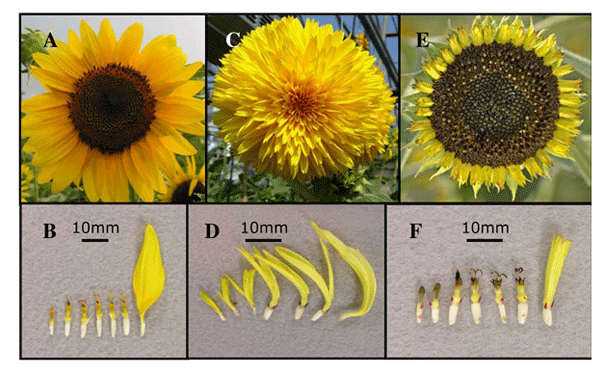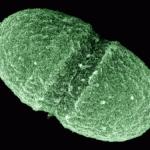
Vincent van Gogh’s Still Life 'Vase with Fifteen Sunflowers', with arrows indicating the double-flowered mutants. Credit: John Burke/University of Georgia
Scientists have revealed the mystery behind the mutations depicted in Vincent van Gogh’s sunflower paintings.
Common sunflowers usually have a single whorl of yellow ray florets. But when you look closely at Van Gogh’s Still Life ‘Vase with Fifteen Sunflowers’, the flowers have thick bands of yellow ‘double flowers’.
Scientists from the University of Georgia in the US have now managed to reveal the genetic basis of this mutation, and they published the results today in the online journal PLoS Genetics. “We actually first started studying this gene family because a similar gene is known to be responsible for the loss of branching in maize… and we were interested in finding out if the loss of branching during sunflower domestication was likewise conditioned by a member of this gene family,” senior author John Burke said.
To understand the genetic basis of the mutation, Burke and his colleagues using the same plant crossing techniques that Gregor Mendel used to lay the foundations of modern genetics. Burke said that while these crosses don’t provide direct insight into the nature of the underlying genes, they provide a low-tech means for making basic genetic inferences and are a nice complement to more modern approaches.
By crossing the common sunflower with the double flowered mutant, the scientists found a single, dominant gene (HaCYC2c) was responsible for the mutation when it is switched on in the wrong place. “It is normally expressed only in ray florets, but it is switched on in disc florets in the mutants, resulting in the development of a ray-like phenotype in the wrong place.”
Subsequent crosses revealed a second mutation, which results in a third, intermediate flower type. This is the result of a jumping gene, which causes the plant to produce tubular florets instead of the normal rays.

The most common, wild-type sunflower variety is shown in box A, and its florets are shown in B. Box C shows a double-flowered mutant variety, with its florets shown in D. Box E shows the tubular variety, with its florets shown in F. Credit: John Burke/University of Georgia
By screening hundreds of sunflowers, the scientists found that wild sunflowers never have a mutation in the HaCYC2c gene, while the double-flowered varieties always have the same mutation in the on/off switch. In addition, the tubular varieties always have a disrupted copy of the gene.
“All of this evidence tells us that the mutation we’ve identified is the same one that van Gogh captured in the 1800s,” Burke said.






